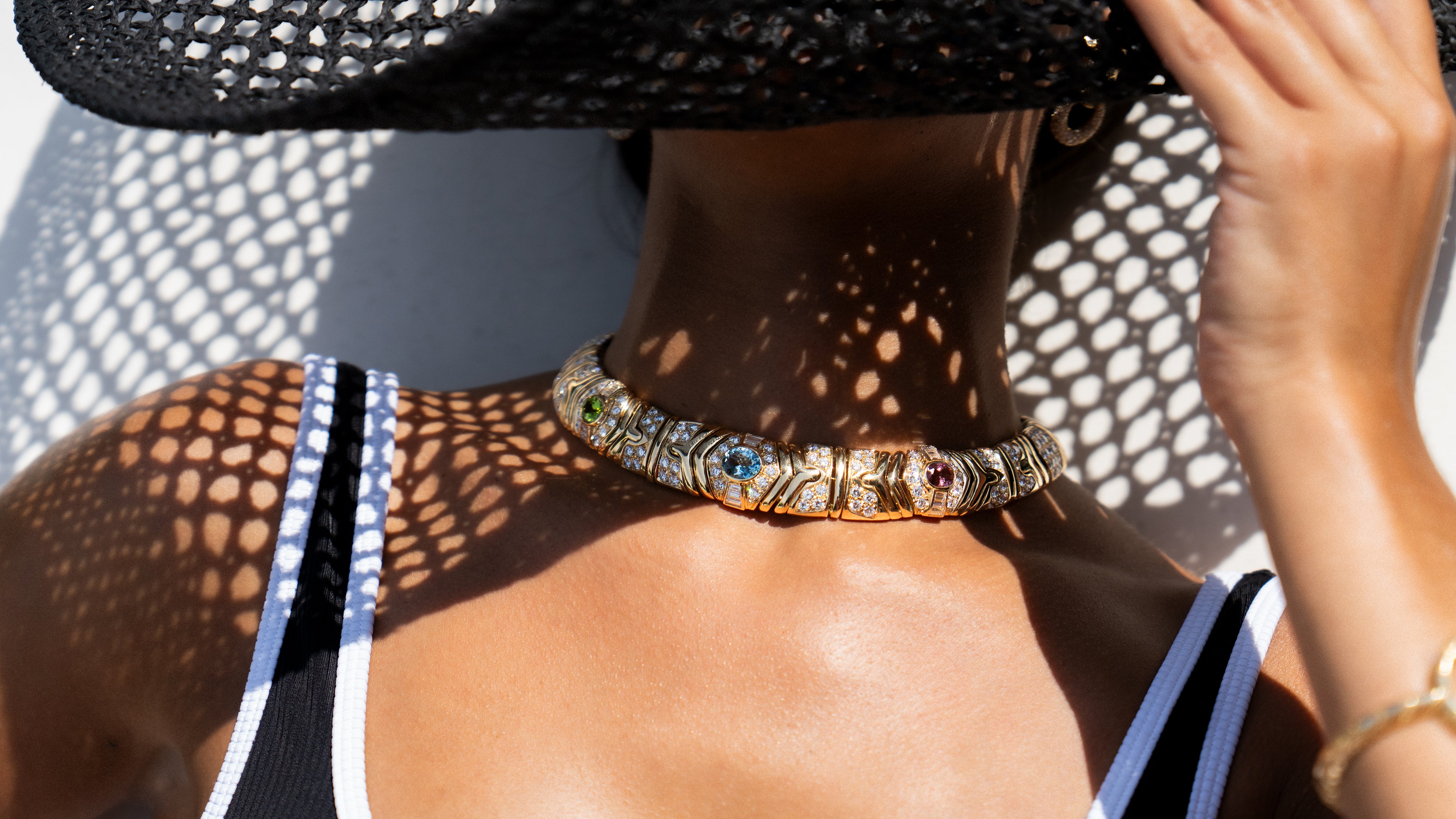Late Victorian Aesthetic Period: 1885-1901
Late Victorian Aesthetic Period: 1885-1901
As the 20th Century approached, there was a strong movement to cast off the stiff and ponderous fashions and morals that defined the Victorian Grand Period. It was time to give way to the Aesthetic Movement.
The anthem became “art for art’s sake,” with the acceptance of the outward beauty of an object rather than the search for its deeper meaning. The movement was a departure from the Victorian penchant for sentimental works and moral allusions. Leading the charge were groundbreaking artists such as James McNeill Whistler and the witty, wonderful Oscar Wilde. And, of course, Sarah Bernhardt, who was stealing the show – and hearts – of theatregoers.
Charles Dana Gibson created the “Gibson Girl,” drawings depicting women as independent, self-assured, and fun loving.
Breaking Free
The world was changing rapidly, and the creative spirit was flourishing in art, literature and fashion. Electricity was lighting up the nights. The wealthy were getting wealthier. The Statue of Liberty arrived on America’s shores. The first Sherlock Holmes mystery was published. And the entertainment of the growing middle class was developing into quite an industry.
Aesthetic Jewels
Much of the jewelry produced during the Aesthetic Period was machine-made, with the manufacturer stamping its mark on each piece. Counteracting this trend were two groups of artists who formed the Art Workers’ Guild and the Arts & Crafts Exhibition Society. Together, they set out to revive handcrafted work with original, breathtaking designs.

Art Nouveau style was also emerging during this time period, with its sinuous curved whiplash, natural motifs, and feminine themes.
Women had become more engaged with leisure activities such as tennis and bicycling, dictating that women’s jewelry could be lighter and smaller. Thus, the opulent rings, bracelets, and pins evident in earlier Victorian eras were replaced by more delicate practical versions during the Aesthetic Period.
Coin purses, watches, and lorgnettes were suspended from long chains to kept these items hands free. Whistle bracelets, with the ability to summon help from up to two miles away, were a must for the country cyclist.

Materials
Most commonly used metals during this time were gold, silver, and platinum as well as rolled gold – which was comprised of a thin gold layer attached to a base metal and rolled into sheets.
Diamond, ruby, sapphire and emerald gemstones were often the star attraction in aesthetic jewels. Semi-precious stones were also quite popular, including amethyst, aquamarine, chrysoberyl, chrysoprase, opal, pearl, peridot, quartz, turquoise and moonstone. Other materials like horn and black glass also played a role in the creation of these pieces.

Aesthetic Motifs
While many changes took place during the late Victorian era, Etruscan and Egyptian revival themes continued to be highly sought after. Asian themes were also very much in vogue.
Floral themes ruled, including clovers, oak leaves, sunflowers and lilies. Other popular motifs included owls, animal heads, quatrefoils, stars, barrels, bows, crescents, horseshoes, knots and wishbones. Double hearts were often combined with crowns or knots.


Aesthetic Techniques
Gemstones featured three different cuts:
- Rose-cut diamonds: round and domed with a faceted top.
- Mine-cut diamonds: Predecessor to the modern round brilliant but features a high crown, small table, and a large culet facet.
- Cabochon-cut gemstones: with a round polished top and a flat bottom.
Aesthetic Must-Haves
Other trends embraced by the populace included:
- Petite earrings - pearls by day, diamond studs by night. Screw-back earrings made their debut, freeing women from the need for pierced ears.
- Lots of brooches - which were scattered across the neckline.
- Vinaigrettes - small metal containers that held scented sponges or spices.
- Mizpah Jewelry - Mizpah is the Hebrew word meaning, “The Lord watch between me and thee while we are absent one from another.”
- Chokers (or dog collars) - a trend that was inadvertently sparked by Princess Alexandra, who wore chokers to conceal a scar on her neck.
- Ingenious convertible necklaces that became tiaras by attaching the jewels to a rigid frame for true versatility. Parts of the necklace could also be removed and worn as brooches or hair ornaments.
- Hair combs - carved from tortoise shell and decorated with gemstones, which were the perfect complement to modern hairstyles.
- Brooches and pins in abundance - decorated with stars, shamrocks, knots and hearts; birds and beasts and all that’s wild, awash in colorful gems.
- Novelty and sport brooches - in particular those depicting horseshoes, to celebrate Prince Edward’s love of horse racing.
- Bracelets - stacked with a combination of wide and narrow styles, sparkling with diamonds and colored gemstones.
- Necklaces - with fringes and rows of diamonds dangling from chains.

This and That
Minimalistic was the word for Aesthetic jewelry trends. Very little was worn during the day, and daytime diamonds were a definite no-no. In 1890, fearing that women were abandoning their jewelry, the Jewellers’ Association asked the Princess of Wales to set an example for the populace. She obliged by making a few purchases, but operas and dress balls continued to be the only events where jewels were lavishly displayed.
Queen Victoria celebrated her Golden Jubilee, marking the 50th year of her reign, in 1887. Her death in 1901 brought an end to the Victorian Era. Victoria’s son Edward VII and his Queen Alexandra would carry on setting the trends for the next era of fashion.
Browse our Selection of Victorian Jewelry
